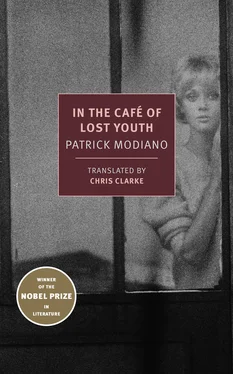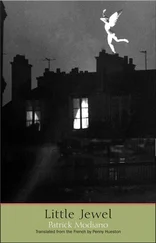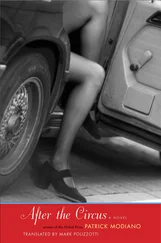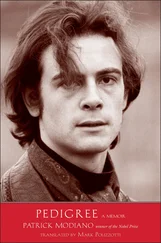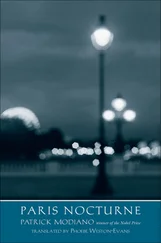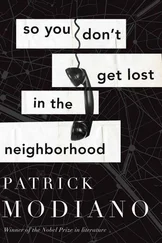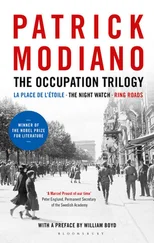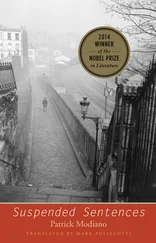Patrick Modiano - In the Café of Lost Youth
Здесь есть возможность читать онлайн «Patrick Modiano - In the Café of Lost Youth» весь текст электронной книги совершенно бесплатно (целиком полную версию без сокращений). В некоторых случаях можно слушать аудио, скачать через торрент в формате fb2 и присутствует краткое содержание. Год выпуска: 2016, ISBN: 2016, Издательство: New York Review Books, Жанр: Современная проза, на английском языке. Описание произведения, (предисловие) а так же отзывы посетителей доступны на портале библиотеки ЛибКат.
- Название:In the Café of Lost Youth
- Автор:
- Издательство:New York Review Books
- Жанр:
- Год:2016
- ISBN:978-1-59017-954-3
- Рейтинг книги:4 / 5. Голосов: 1
-
Избранное:Добавить в избранное
- Отзывы:
-
Ваша оценка:
- 80
- 1
- 2
- 3
- 4
- 5
In the Café of Lost Youth: краткое содержание, описание и аннотация
Предлагаем к чтению аннотацию, описание, краткое содержание или предисловие (зависит от того, что написал сам автор книги «In the Café of Lost Youth»). Если вы не нашли необходимую информацию о книге — напишите в комментариях, мы постараемся отыскать её.
In the Café of Lost Youth — читать онлайн бесплатно полную книгу (весь текст) целиком
Ниже представлен текст книги, разбитый по страницам. Система сохранения места последней прочитанной страницы, позволяет с удобством читать онлайн бесплатно книгу «In the Café of Lost Youth», без необходимости каждый раз заново искать на чём Вы остановились. Поставьте закладку, и сможете в любой момент перейти на страницу, на которой закончили чтение.
Интервал:
Закладка:
When Louki was sitting with Tarzan, Fred, and La Houpa, did she drink as much as they did, or did she pretend so as to not upset them? In any case, her back straight, her movements slow and gracious, her smile almost imperceptible, she held her liquor extremely well. At the bar, it’s easier to cheat. You wait for a moment when your friends aren’t paying attention and you empty your glass into the sink. But there, at one of the tables of the Condé, it was more difficult. The others forced you to keep up with their drinking escapades. On that subject, they revealed themselves to be extremely touchy and considered you unworthy of their group if you didn’t accompany them to the very end of what they referred to as their “journeys.” As for other kinds of intoxicants, I had suspected without being certain that Louki used some, with certain members of the group. All the same, nothing in her eyes or her attitude would lead you to believe that she escaped to synthetic paradises.
I’ve often wondered if an acquaintance had told her about the Condé before she went in for the first time. Or if someone had asked her to meet him in the café and then not turned up. If so, she might have sat there at her table, day after day and night after night, hoping to run into him once again in this place that was the sole point linking her to this unknown person. No other way of getting in touch with him. No address. No phone number. Just a first name. And yet, maybe she had just washed up there by chance, as I had. She was in the neighborhood and had sought shelter from the rain. I’ve always believed that certain places are like magnets and draw you towards them should you happen to walk within their radius. And this occurs imperceptibly, without you even suspecting. All it takes is a sloping street, a sunny sidewalk, or maybe a shady one. Or perhaps a downpour. And this leads you straight there, to the exact spot you’re meant to wash up. It seems to me that because of its location, the Condé had that sort of magnetic power, and if one were to calculate the probability, the results would indicate that within a fairly large area, it was inevitable that you would drift towards it. This much I know from personal experience.
One of the members of the group, Bowing, the one we called “the Captain,” had undertaken a venture of which the others approved. For going on three years he had been taking note of the names of the Condé’s customers as they arrived, in each instance jotting down the date and exact time. He had charged two of his friends with the responsibility of performing the same task at Le Bouquet and La Pergola, both of which stayed open all night. Unfortunately, in both of those cafés, the customers didn’t always want to give their names. It was as if Bowing were trying to save butterflies that fluttered around a lamp from being forgotten. He envisioned a great register where the names of the customers of all the cafés of Paris were recorded, with notes made of their successive arrivals and departures. He was haunted by what he called “fixed points.”
In this uninterrupted stream of women, men, children, and dogs that pass by and end up lost from sight among the streets, it would be nice to hold on to a face once in a while. Yes, according to Bowing, amidst the maelstrom that is a large city, you had to find a few fixed points. Before he left to go abroad, he gave me the notebook where, day after day for three years, the customers of the Condé had been listed. Louki only appeared under her borrowed name, and she is mentioned for the first time one January 23rd. The winter that year had been particularly severe, and some of us didn’t leave the Condé all day so as to stay out of the cold. The Captain also made note of our addresses in order to make it possible to imagine the customary route that each of us took to the Condé. For Bowing, it was another way of establishing fixed points. He doesn’t mention her address right away. It’s not until March 18th that you read, “2 p.m. Louki, 16, rue Fermat, 14th arrondissement.” But on September 5th of that same year, she had moved: “11:40 p.m. Louki, 8, rue Cels, 14th arrondissement.” I assume that Bowing drew our routes to the Condé on large maps of Paris and that for this task, the Captain would use ballpoint pens with different-colored ink. Maybe he wanted to know if it was possible for us to run into each other before we even reached our destination.
As a matter of fact, I remember having met Louki one day in an unfamiliar neighborhood after paying a visit to a distant cousin of my parents’. When I left his place, I was walking towards the Porte Maillot Métro, and we ran into each other at the far end of avenue de la Grande-Armée. I stared at her and she gave me an anxious look, as if I had caught her in the middle of an embarrassing situation. I held out my hand to her. “We’ve seen each other at the Condé,” I told her, and the café had suddenly seemed as if it were on the other side of the world. She gave a little embarrassed smile: “Oh, sure, at the Condé.” It wasn’t too long after she had first appeared there. She hadn’t yet started to mingle with the others and Zacharias hadn’t yet named her Louki. “The Condé’s a funny little café, huh?” She had given a nod of her head in agreement. We walked a short ways together, and she told me that she lived nearby, but added that she wasn’t at all fond of the neighborhood. It’s stupid, I could have found out her real name that day. Then we went our separate ways at the Porte Maillot, by the entrance to the Métro, and I watched her recede into the distance towards Neuilly and the Bois de Boulogne, walking more and more slowly, as if to give someone the opportunity to catch up to her. I got a feeling that she wouldn’t come back to the Condé and that would be the last I heard of her. She would disappear into what Bowing called “the anonymity of the big city,” which he endeavored to combat by filling the pages of his notebook with names. A 190-page Clairefontaine notebook with a plastic-coated red cover. To be frank, that doesn’t amount to much. If you flip through the notebook, other than fleeting names and addresses, there is little to be learned about either these people or me. Doubtless the Captain figured it was already quite significant to have named us and “fixed” us somewhere. As for the rest… At the Condé, we never questioned each other about our origins. We were too young and we didn’t even have pasts to reveal, we lived in the present. Even the older customers like Adamov, Babilée, or Dr. Vala never alluded to their pasts. They were just happy to be there, among us. It isn’t until now, after all this time, that I feel regret; I would have liked for him to have been more precise in his notebook, and for him to have included a short biography of each of them. Did he really believe that a name and an address would later be enough to keep track of a life? And especially when the names weren’t real? “Louki. Monday, February 12th, 11 p.m.” “Louki. April 28th, 2 p.m.” He also indicated the seats they took around the tables each day. Sometimes there weren’t even names. Three times in June of that year, he noted: “Louki with the brown-haired guy in the suede jacket.” He hadn’t asked him his name, this fellow, or else he had been refused an answer. Apparently the guy wasn’t a regular customer. The brown-haired guy in the suede jacket had been lost forever among the streets of Paris, and Bowing had only managed to fix his shadow for a few seconds. Also, there were inaccuracies in his notebook. I established points of reference which corroborate my belief that she had not in fact come to the Condé for the first time in January, as Bowing would have you believe. I have a memory of her from well before that date. The Captain didn’t mention her before the others started to call her Louki, and I guess that until then he hadn’t noticed her presence. She hadn’t even been given a vague entry along the lines of “2 p.m. A brunette with green eyes,” something similar to “the brown-haired guy in the suede jacket.”
Читать дальшеИнтервал:
Закладка:
Похожие книги на «In the Café of Lost Youth»
Представляем Вашему вниманию похожие книги на «In the Café of Lost Youth» списком для выбора. Мы отобрали схожую по названию и смыслу литературу в надежде предоставить читателям больше вариантов отыскать новые, интересные, ещё непрочитанные произведения.
Обсуждение, отзывы о книге «In the Café of Lost Youth» и просто собственные мнения читателей. Оставьте ваши комментарии, напишите, что Вы думаете о произведении, его смысле или главных героях. Укажите что конкретно понравилось, а что нет, и почему Вы так считаете.
